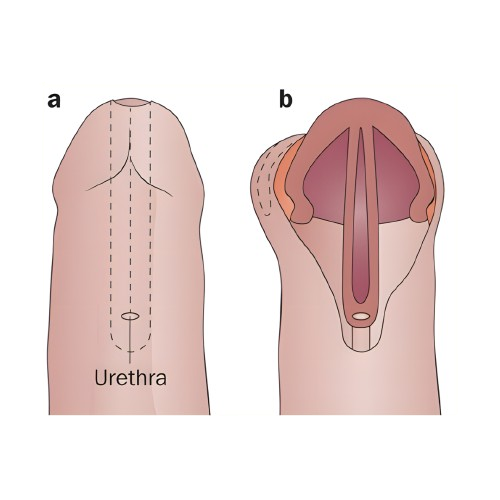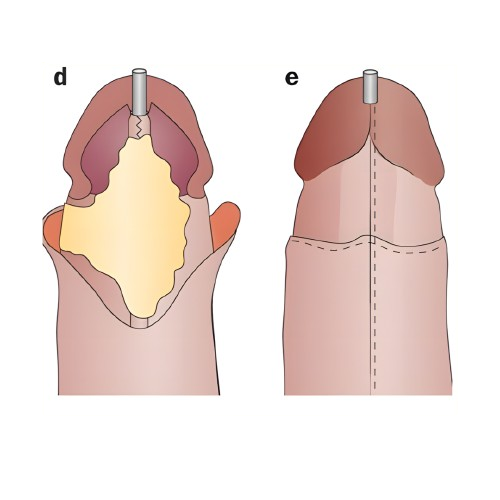Hypospadias Surgery
Confidence Begins with Expert Care
Satisfied Patients
Year of Experience
Satisfied Patient
Awards
What is Hypospadias?
Hypospadias is a birth condition in males where the urethral opening is on the underside of the penis instead of the tip. The severity varies based on how far the opening is from its normal position.
What causes it:
- Congenital (present at birth)
- Genetic factors (family history of hypospadias)
- Hormonal imbalances during fetal development
- Environmental exposures during pregnancy (certain medications, smoking, endocrine disruptors)
Symptoms:
- Urethral opening not at the tip of the penis
- Downward curvature of the penis (chordee)
- Abnormal spraying of urine
- Difficulty urinating while standing
Complete Process
Detailed Evaluation
Before surgery, we assess the type and severity of hypospadias using physical examination and (if needed) ultrasound. Parental counseling is provided to explain the treatment plan, anesthesia, and recovery process.
Surgical Correction
Under general anesthesia, we reconstruct the urethral passage using local tissues or grafts. The surgery also straightens the penis (if chordee is present) and creates a normal-looking urinary opening at the tip.
Catheter Placement & Healing
A small tube (catheter) is placed in the penis to divert urine while healing takes place. The wound is covered with a light dressing. Most children go home within 24 hours.
Post-Op Monitoring & Follow-Up
We remove the catheter after 7–10 days and ensure the new urinary passage is functioning well. Regular follow-up checks are scheduled to monitor healing, stream quality, and cosmetic results.
Hypospadias Surgery
Why Choose Us for Hypospadias Surgery?
- Pediatric plastic and urogenital surgical specialists
- Gentle, child-friendly approach
- Modern techniques like Tubularized Incised Plate (TIP) repair
- Minimal scarring and natural appearance
- Parental counseling and post-op support
- High success rates with primary and redo surgeries


Need Help?
Patient Care Tips After Hypospadias Surgery
- Keep the dressing clean and dry
- Give all medications as prescribed
- Prevent your child from straining
- Avoid cycling or strenuous activity
- Watch for signs of infection
- Attend all follow-ups
Get In Touch!
Permanent Treatment For hypospadias surgery
If your child has hypospadias and you’re considering corrective surgery, contact us today for a personalized consultation and expert care.
+91-98765-43210
info@astheticplasticsurgery.com
Asthetic Plastic Surgery 2nd Floor, Wellness Plaza South Extension, New Delhi – 110049
Testimonials
Hear directly from our patients as they share their personal journeys—how expert care, advanced procedures, and compassionate support helped them regain confidence and improve their quality of life. These testimonials reflect the transformative impact of our work and the dedication we bring to every patient’s experience.
"We were really worried when we found out our son had hypospadias. Dr. Sharma and his team made the whole process smooth and stress-free. The surgery results were excellent, and our son is now doing great."
Explore Our Latest Blogs
Discover insightful articles covering treatments, recovery tips, real patient experiences, and the latest advancements in medical care. Whether you’re exploring your options or seeking to better understand a condition, our blogs offer reliable information and compassionate guidance to support you every step of the way.
FAQ
Frequently Asked Questions
Yes, hypospadias surgery is generally safe when performed by an experienced pediatric urologist or surgeon. It’s a common procedure with high success rates and low risk of complications.
Most children diagnosed with hypospadias are good candidates for surgery, especially when treated between 6 to 18 months of age. A thorough evaluation by a specialist will determine the best approach based on the severity and overall health.
Initial recovery usually takes about 1–2 weeks, during which your child may need to wear a catheter or dressing. Complete healing may take a few months, with follow-up visits to monitor progress.
Yes, one of the main goals of hypospadias surgery is to restore both function and a natural appearance. In most cases, the penis looks and works normally after healing.
In the majority of cases, the results are permanent. Rarely, a second procedure may be needed if complications like fistula or narrowing occur, but these are manageable with timely care.
Yes, many clinics offer flexible payment plans or EMI options to make treatment more affordable. Feel free to ask during your consultation for available financial assistance.

